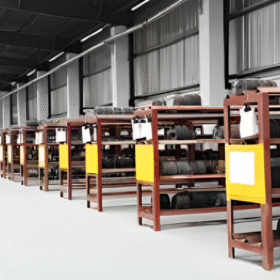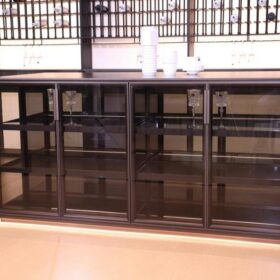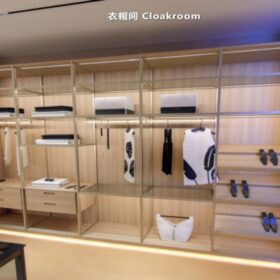Sustainable Materials in Modern Kitchen Furniture Handles
In the contemporary realm of interior design, sustainability has emerged as a driving force, prompting a shift towards eco-friendly materials and practices. This trend has extended to the realm of kitchen furniture, with sustainable materials playing a significant role in the design of modern kitchen furniture handles. By embracing sustainable materials, kitchen designers can create aesthetically pleasing and environmentally conscious spaces.
Benefits of Sustainable Materials
The use of sustainable materials in kitchen furniture handles offers numerous benefits, including:
Environmental Sustainability: Sustainable materials contribute to environmental preservation by reducing waste, conserving natural resources, and promoting energy efficiency.
Health and Well-being: Sustainable materials often possess hypoallergenic and antimicrobial properties, enhancing indoor air quality and promoting health and well-being.
Durability: Sustainable materials are typically robust and durable, ensuring longevity and minimizing the need for frequent replacements.
Types of Sustainable Materials
Various sustainable materials can be employed in the production of kitchen furniture handles. These include:
Wood Species
Bamboo: A rapidly renewable resource that exhibits excellent strength and durability.
Reclaimed Wood: Wood repurposed from old buildings or furniture, reducing waste and conserving natural resources.
Cork: A natural insulator and antimicrobial material that provides a soft and resilient grip.
Metals
Recycled Aluminum: Aluminum sourced from recycled materials, reducing energy consumption and pollution.
Stainless Steel: A corrosion-resistant and durable material that is easily recyclable.
Copper: An antimicrobial metal that adds a touch of warmth and sophistication to kitchen handles.
Plastics
Bioplastics: Plant-based plastics that are biodegradable and compostable, minimizing environmental impact.
Recycled Plastic: Plastic repurposed from post-consumer waste, diverting it from landfills.
Melamine: A durable, scratch-resistant material that is free from harmful chemicals.
Other Materials
Glass: A recyclable and non-porous material that provides a sleek and elegant appearance.
Concrete: A durable and eco-friendly material that adds an industrial touch to kitchen handles.
Ceramic: A non-toxic and heat-resistant material that can be glazed in various colors and patterns.
Design Considerations
When selecting sustainable materials for kitchen furniture handles, designers consider various factors, such as:
Aesthetics: The material should complement the overall design of the kitchen, enhancing the aesthetic appeal.
Functionality: The material should provide a comfortable and ergonomic grip, ensuring ease of use.
Durability: The material should withstand daily wear and tear, ensuring longevity and reducing the need for replacements.
Conclusion
The adoption of sustainable materials in modern kitchen furniture handles is a testament to the growing importance of environmental consciousness in interior design. By embracing these eco-friendly alternatives, designers can create stylish and functional kitchens that contribute to a healthier and more sustainable future. From renewable wood species to recycled metals and biodegradable plastics, the range of sustainable materials available provides ample opportunities for designers to explore innovative and environmentally responsible solutions.
-
2024-11-29Top Trends in Modern Kitchen Cabinet Pulls for 2024
-
2024-11-28The Ultimate Guide to Modern Kitchen Cabinet Pulls- Materials, Styles, and Tips
-
2024-11-27Elevate Your Kitchen Design with These Must-Have Modern Cabinet Pulls
-
2024-11-26Sleek and Stylish- The Best Modern Kitchen Cabinet Pulls for a Contemporary Look










